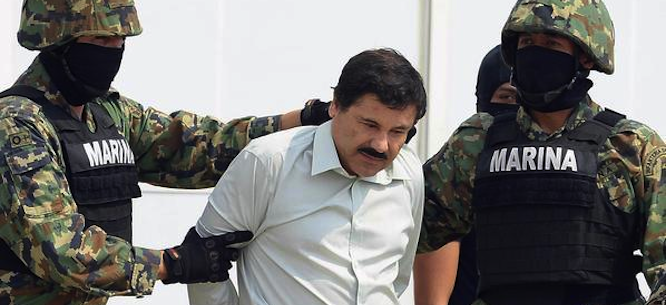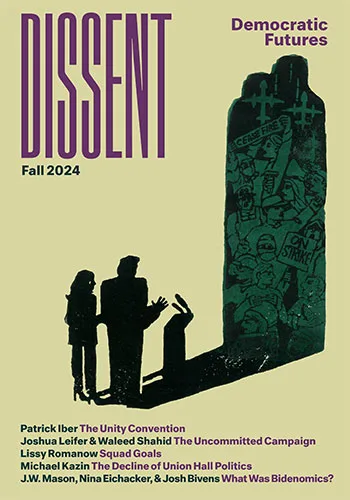What Does El Chapo’s Escape Mean for the Mexican Drug Trade?
What Does El Chapo’s Escape Mean for the Mexican Drug Trade?
El Chapo’s escape shows the Sinaloa Cartel still has extraordinary financial and political clout. Benjamin T. Smith explores the effects his newfound freedom might have on trafficking and violence in Mexico.

Joaquin “El Chapo” Guzmán’s flight from the Altiplano prison has made a laughing stock of the current Mexican administration. The escape through nearly a mile of high-tech tunnel left commentators in Mexico and the United States utterly bewildered. How could the world’s most wanted drug trafficker organize such an audacious plan? Who knew? Why did they help him? Perhaps, most pertinently, why did no one notice the excavation of over 1,300 tonnes of earth from a small, isolated house in the middle of the cornfields surrounding the prison? Given the Mexican police’s stunning investigative incompetence (consider the bungled inquiries into the massacres at Iguala, Tlatlaya, and Apatzingan), we will probably never know.
One thing we do know is Chapo’s newfound freedom will have wide-reaching effects on the Mexican drug trade. On the most basic level, his escape demonstrates that his cartel, the Sinaloa Federation, is far from the weak shell of an organization that many commentators imagined. Chapo’s capture, the alleged death of top negotiator, Juan José Esparragoza Moreno “El Azul,” the arrest of top hitman José Rodrigo Aréchiga Gamboa “El Chino Ántrax,” and the aging of the last major capo, sixty-seven-year-old Ismael Zambada García “El Mayo” persuaded many that the Sinaloa group’s time was up. Journalists speculated that Sinaloa’s senior traffickers were joining other organizations, and that the new generation of so-called “narco-juniors” were too pampered and too inexperienced to continue the trade. But the resources employed to manage El Chapo’s escape suggests the organization still has extraordinary financial and political clout.
Since El Chapo’s capture two narratives have dominated discussions of the Mexican drug trade. First, there is the story of fragmentation. In September 2014 Mexico’s attorney general’s office announced there were nine major cartels and at least forty-three relatively autonomous gangs involved in the drug trade. Eight years earlier, there were only four major cartels. As confrontations in Guerrero and Michoacán showed, turf wars over both production and sales were becoming increasingly bloody.
Chapo’s escape may, gradually, bring this process of atomization to an end. He is the only trafficker with the influence, savvy, and muscle to coerce or co-opt these organizations to work together; and he knows such inter-gang disputes are bad for business. Furthermore, rumors from the Altiplano prison where Chapo was locked up suggest that he had started to build bridges with his old foes in the Beltran Leyva organization. Putting these hostilities to rest could precipitate the reformation of the Sinaloa Federation of the early 2000s, before El Chapo and the Beltran Leyvas split, allegedly over a mutual love interest.
The second story is the rise of second-generation organization, the Cartel Jalisco Agency (CJNG). The Mexican Attorney General’s office declared the heads of the CJNG “the world’s richest drug traffickers.” Mexican officials have arrested two key leaders, Abigael Gonzalez Valencia “El Cuini,” and Rubén Oseguera González “El Menchito.” But the capo, Nemesio Oseguera Cervantes “El Mencho,” is still at liberty. The CJNG has demonstrated a willingness to confront the government openly, ambushing and murdering police officials, blocking off cities, killing officials, and even blowing army helicopters out of the sky.
With the inevitable resurgence of the Sinaloa Federation, where do the CJNG stand? The CJNG actually emerged in 2009 as an armed wing of the Sinaloa Federation. Roaming assassins, they performed a series of public hits on the Sinaloa Federation’s rivals, the Zetas (they were originally dubbed the “Matazetas” or Zeta Killers). Over the next three years, they very deliberately avoided the Sinaloans’ business interests, building an extensive network of drug trafficking connections to Asia and Europe rather than the United States.
Recently the CJNG, emboldened perhaps by the perceived decline of the Sinaloa group, has moved in on the U.S. trade. This year the CJNG appeared to make a deal with the Cártel Arellano Félix (CAF) to take over the trafficking route of Tijuana from its Sinaloa Federation operators. El Mencho has allegedly moved to Baja, California to preside over operations, and murders in the city are on the rise. Between June 4 and 10, twenty people were killed in gangland hits.
Chapo’s escape puts the CJNG in a difficult situation. Do they attempt to re-establish connections with their old employers? Or do they maintain their contacts with the CAF and continue to move in on Sinaloa territory? The former may be too much even for business-minded El Chapo, who has a long-standing blood feud with the CAF. The latter could, sadly, magnify the Tijuana struggle into the kind of bloody contest that hit the city of Ciudad Juárez in 2009, causing the murder rate to reach 250 people per month.
Benjamin T. Smith is an associate professor of Latin American history at the University of Warwick. He is currently working on a history of the Mexican press and, together with Wil Pansters and Peter Watt, a history of the Mexican drug trade. His last book, co-edited with Paul Gillingham, was Dictablanda: Politics, Work and Culture in Mexico, 1938-1968 (Durham: Duke University Press, 2014).




